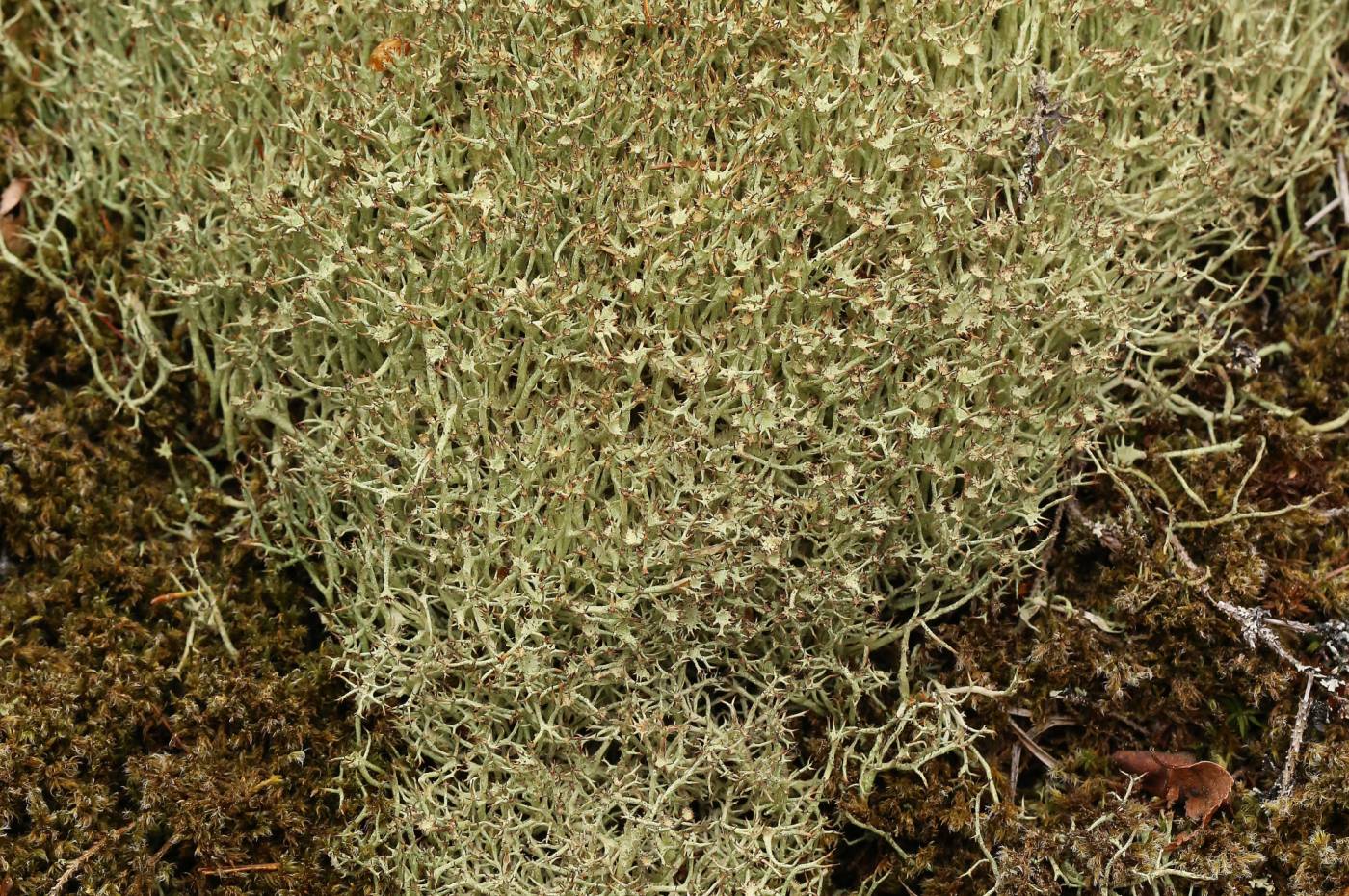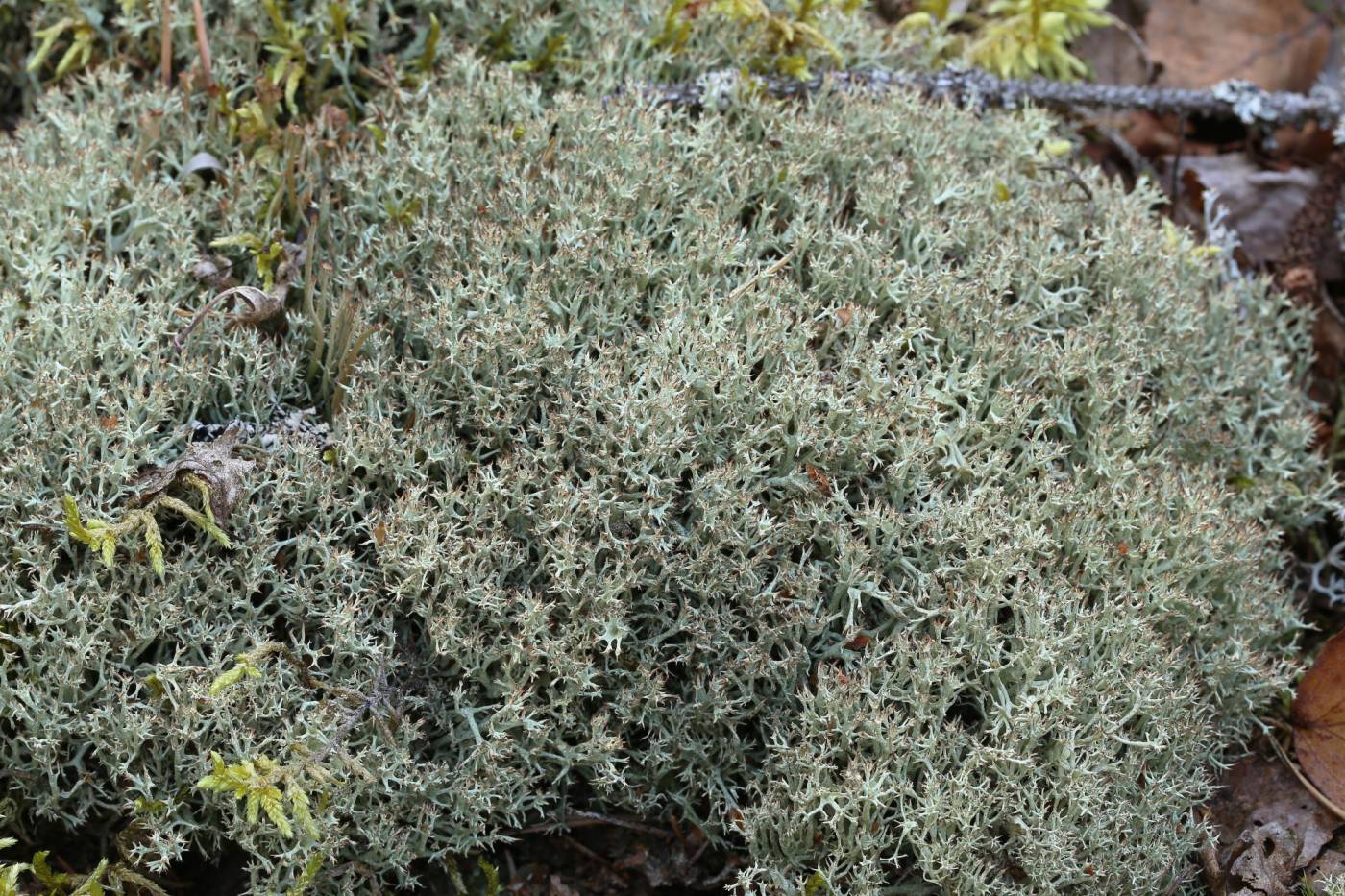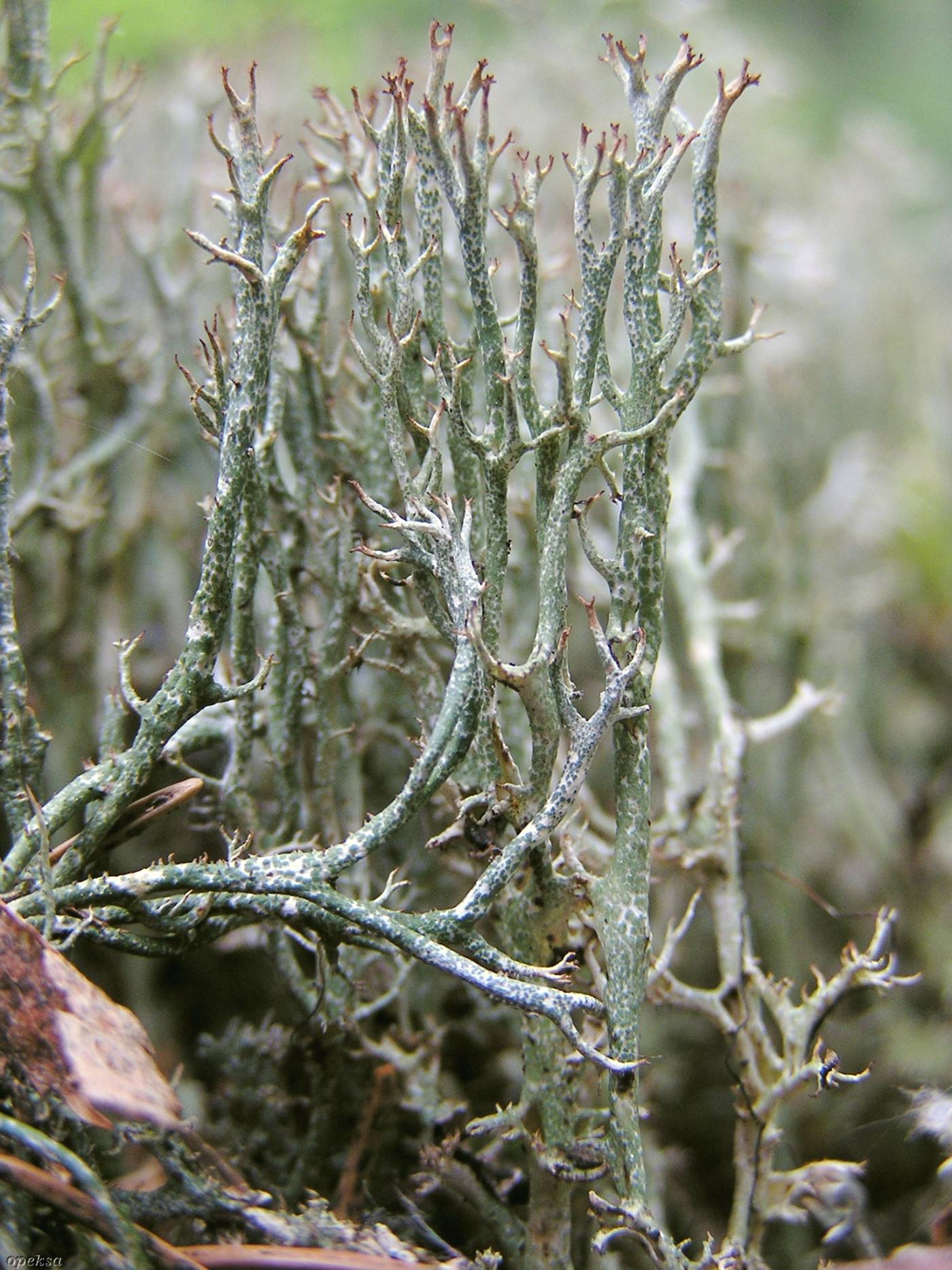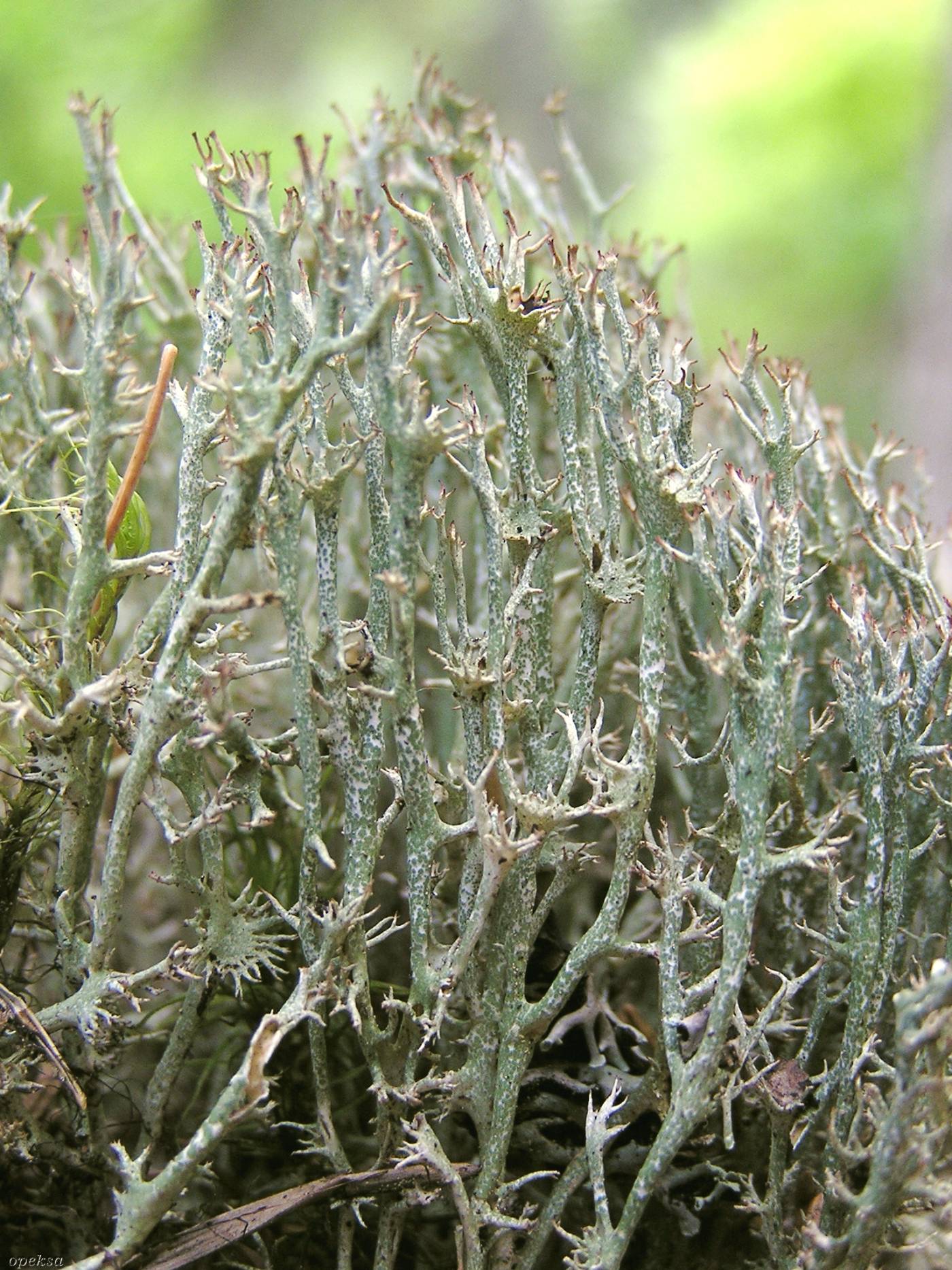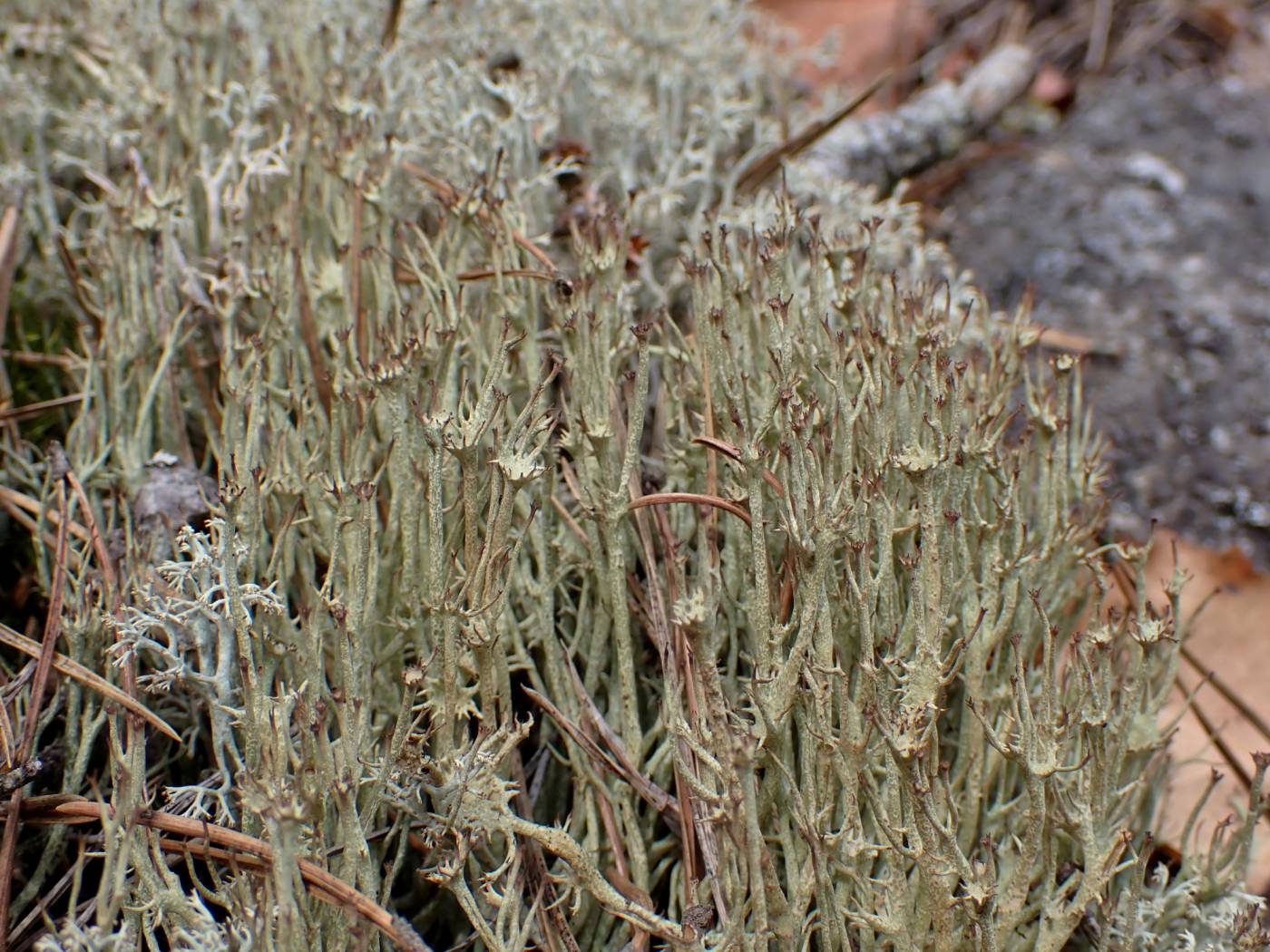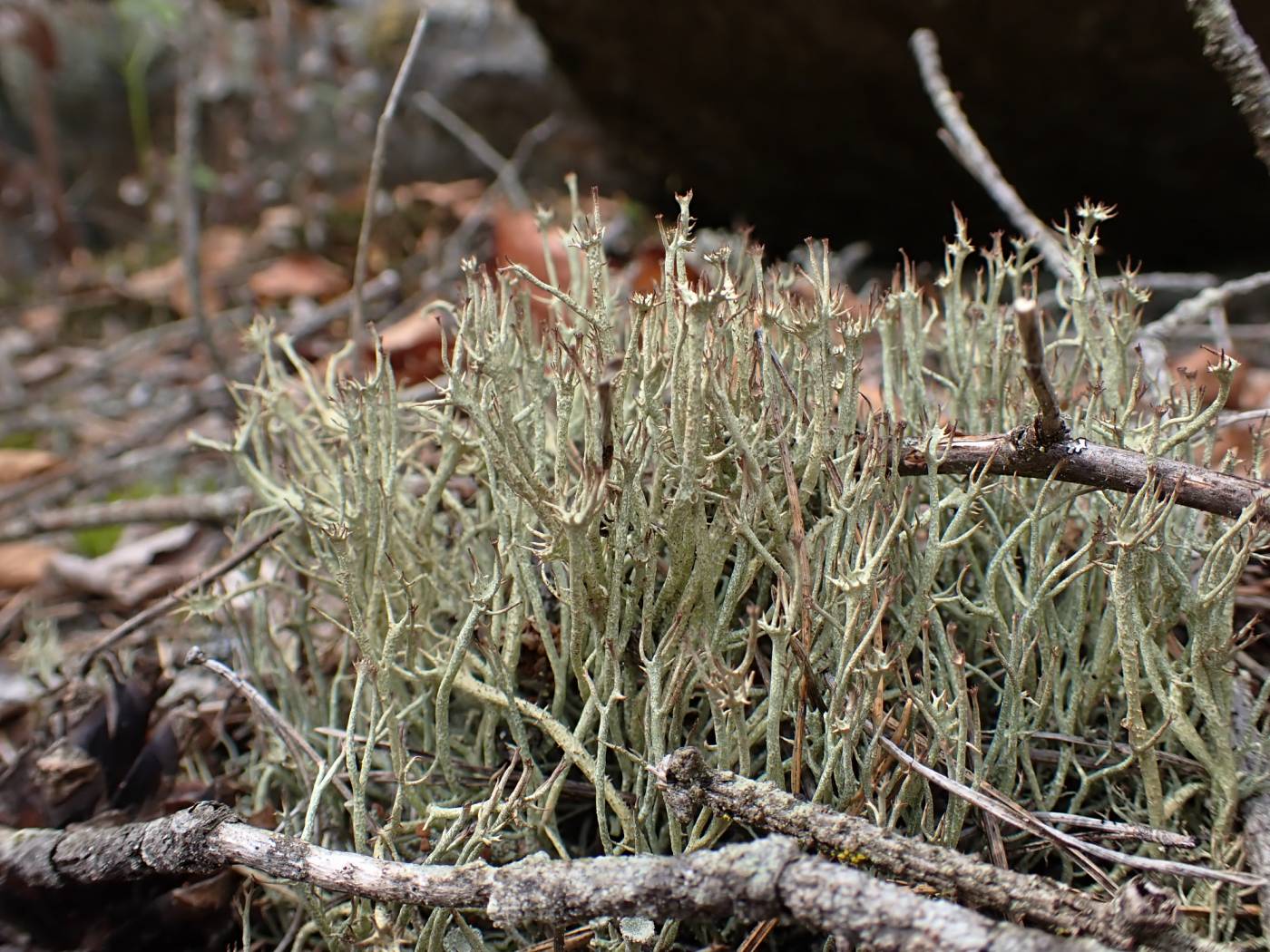A conspicuous lichen forming yellowish cushions (due to the content of usnic acid), the podetia are often dichotomously branched and the primary thallus disappears quickly (primary squamules are often missing). Proliferating scyphi usually develop and have pointed brown tips.
It is a boreal-montane to arctic-alpine species, which grows on acidic soil, humus or within moss cushions. Most commonly, it occurs on humid screes and at places with long-lasting snow cover. However, its ecological amplitude is wider in northern Europe; it also grows on peatbogs and in open forests, where it may also grow directly on wood (Ahti & Stenroos 2013). It is a widely distributed species in the Northern Hemisphere. In central Europe, it is scattered in mountain areas. Recent Czech records come from the Brdy highlands, the Šumava and Hrubý Jeseník Mts. In the Brdy highlands, a rare chemotype containing squamatic acid has been recorded (Malíček 2013), elsewhere the common chemotype with barbatic acid is common (Ahti & Stenroos 2013).
Literature: Malíček J. (2013): Zajímavé nálezy lišejníků v Brdech. – Erica 20: 67–384. Ahti T. & Stenroos S. (2013): Cladoniaceae. – In: Ahti T., Stenroos S. & Moberg R. [eds], Nordic Lichen Flora 5: 87–89. Malíček J. (2013): Zajímavé nálezy lišejníků v Brdech. – Erica 20: 67–101.
taxonomic classification:Ascomycota → Lecanoromycetes → Lecanorales → Cladoniaceae → Cladonia
Red List (Liška & Palice 2010):EN – endangered
Red List (Malíček 2023):C2 – strongly endangered
Occurrence in the Czech Republic
All records: 28, confirmed 25. One click on a selected square displays particular record(s), including their source(s).
